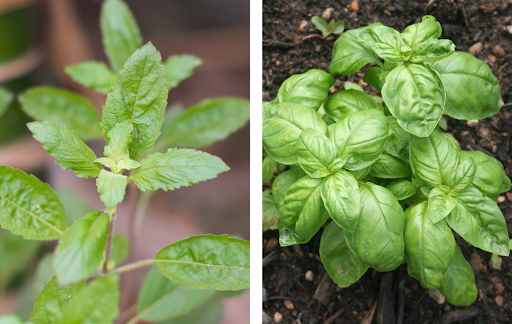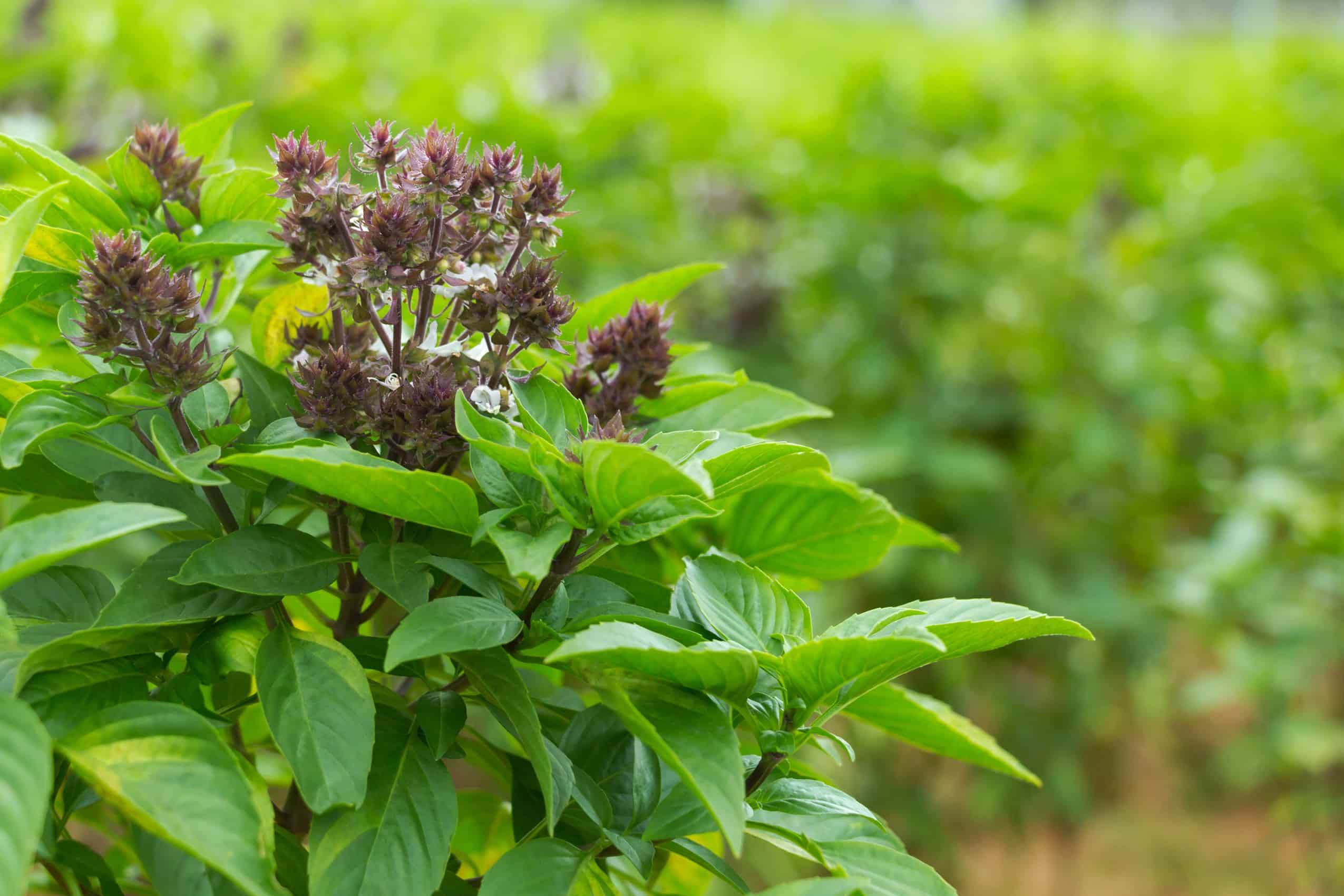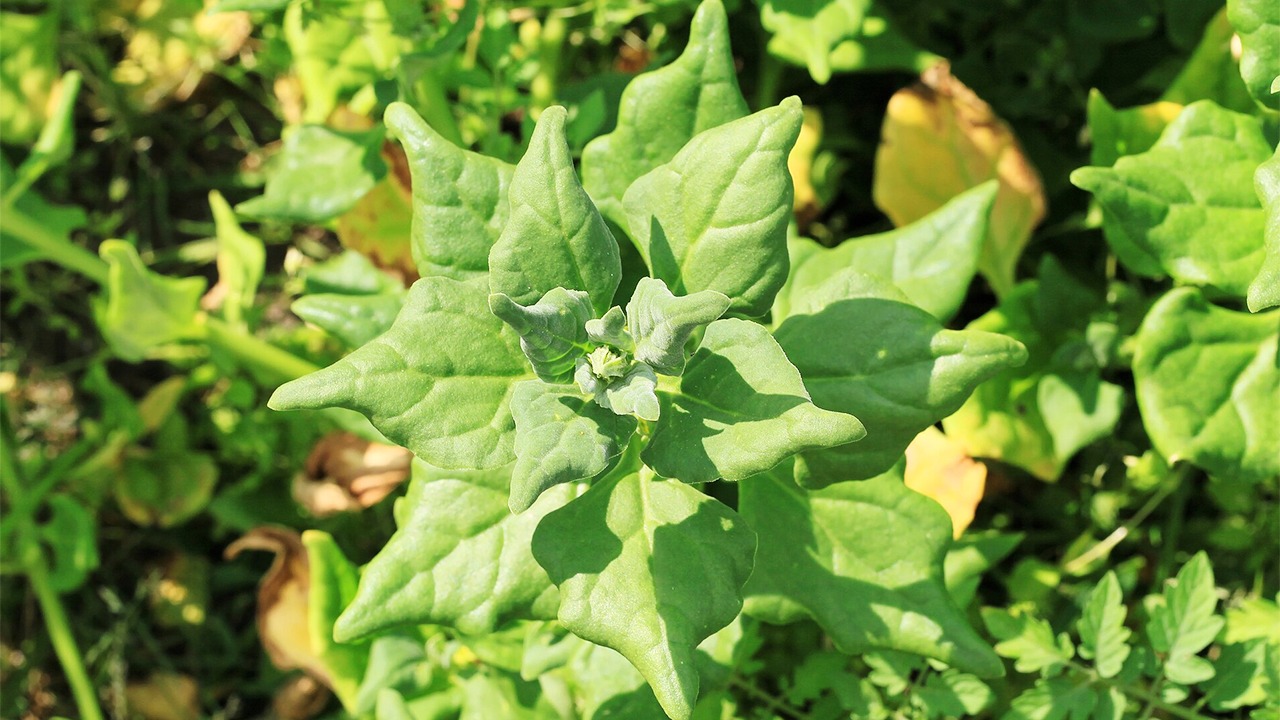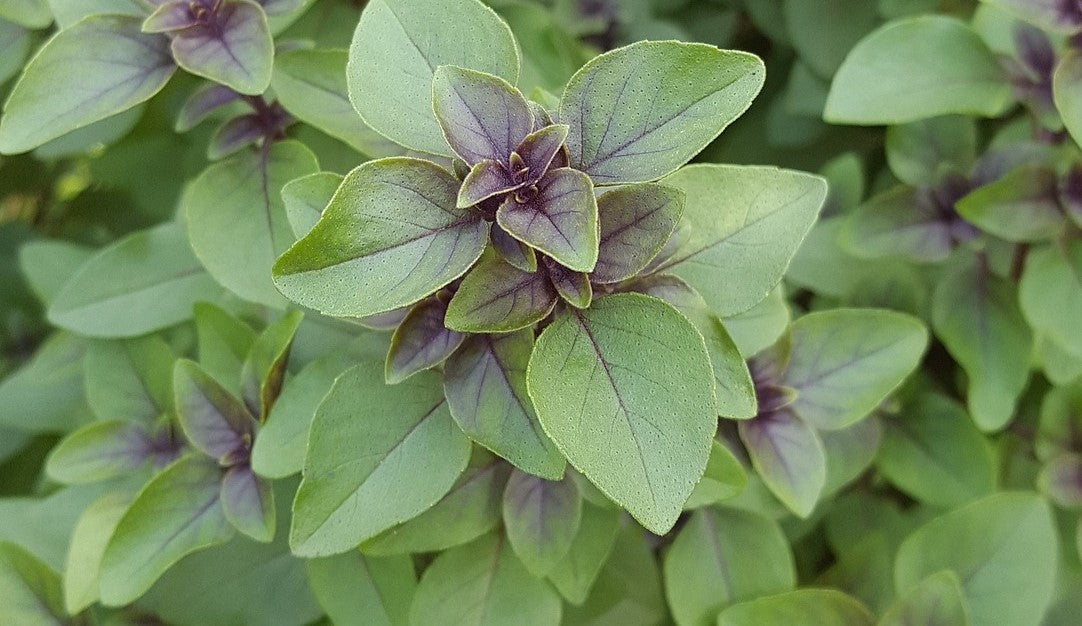Holy Basil vs Thai Basil: What’s the Difference? (With Pictures)
When it comes to flavorful herbs, basil reigns supreme in gardens and kitchens around the world. But not all basil is created equal. Two of the most commonly confused types—Holy Basil (Ocimum tenuiflorum, also known as Tulsi) and Thai Basil (Ocimum basilicum var. thyrsiflora)—may look similar at a glance, but they serve very different roles in cuisine, culture, and medicine. Understanding the differences between these two powerhouse herbs can seriously elevate your cooking, herbal remedies, or home garden. Whether you’re a curious cook, a gardener looking to grow something new, or someone diving into Ayurvedic or Southeast Asian traditions, this guide breaks down everything you need to know about Holy Basil vs Thai Basil—from flavor and aroma to growth habits and health benefits.

Holy Basil (Tulsi): The Sacred Herb of India
Holy Basil, also known as Tulsi, holds a revered place in Indian culture and Ayurvedic medicine. Native to the Indian subcontinent, it has been grown for over 3,000 years and is considered a sacred plant in Hindu traditions. People often grow Tulsi near temples or homes not only for its spiritual significance but also for its powerful medicinal properties. Unlike sweet or culinary basils, Holy Basil isn’t typically used in savory dishes. Instead, its clove-like, spicy, and slightly bitter flavor makes it ideal for herbal teas, tinctures, and medicinal tonics. Tulsi is an adaptogen—meaning it helps the body respond to stress—and is widely used to treat respiratory issues, digestive problems, and inflammation. In appearance, Holy Basil typically has hairy, slightly jagged leaves that are green or sometimes purplish, depending on the variety (Krishna, Rama, or Vana Tulsi). Its aroma is bold and peppery, with hints of clove and lemon, and it often grows into a bushy, aromatic plant that thrives in warm climates. It’s not frost-tolerant and prefers full sun and well-drained soil, making it a perfect addition to summer herb gardens or potted planters.
Thai Basil: The Sweet & Spicy Star of Southeast Asian Cuisine
Thai Basil, on the other hand, is a culinary basil variety that’s a staple in Southeast Asian cooking, especially Thai, Vietnamese, and Lao cuisine. Known for its anise- or licorice-like flavor, Thai Basil is often added to curries, stir-fries, and noodle soups like pho, where it holds its shape and flavor even when cooked. Thai Basil has a distinctive look with smooth, narrow, deep green leaves, often tinged with purple, and a purple stem that sets it apart from Italian sweet basil. It has a sharper, more pungent aroma compared to sweet basil, but it’s much milder and sweeter than Holy Basil. Thai Basil grows as a compact, upright plant and is more tolerant of hot, humid climates, which makes it perfect for tropical gardens or warm-summer containers. Unlike Holy Basil, which is grown mainly for medicinal use, Thai Basil is all about flavor—it’s harvested often and used fresh in cooking to lend brightness and complexity to spicy dishes.
Side-by-Side Comparison Table
| Feature | Holy Basil (Tulsi) | Thai Basil |
|---|---|---|
| Scientific Name | Ocimum tenuiflorum | Ocimum basilicum var. thyrsiflora |
| Origin | Indian subcontinent | Southeast Asia |
| Main Use | Medicinal, tea, religious rituals | Culinary (curries, stir-fries, soups) |
| Flavor Profile | Spicy, clove-like, peppery, bitter | Sweet, anise-like, slightly spicy |
| Leaf Appearance | Hairy, jagged edges, green or purple-tinged | Smooth, narrow, deep green, purple stems |
| Aroma | Strong, spicy, medicinal | Sweet, licorice, herbal |
| Culinary Use | Limited—best for infusions and teas | Excellent in hot dishes and fresh garnishes |
| Growing Habit | Bushy, 1–2 ft tall, sensitive to frost | Upright, 1.5–2 ft tall, heat-tolerant |
| Harvest Use | Leaves, flowers for tea, medicine | Leaves for fresh or cooked meals |
| Common Varieties | Rama Tulsi, Krishna Tulsi, Vana Tulsi | Siam Queen, Queen of Siam |
Which Basil Should You Grow or Use?

If you’re wondering which basil to choose for your garden or your kitchen, it all depends on your goals. If you’re into herbalism, Ayurvedic practices, or want a deeply aromatic tea herb with health benefits, Holy Basil is your best bet. It’s a joy to grow, can be harvested continuously through summer, and makes a relaxing tea that supports immunity and stress relief. If you’re more of a culinary enthusiast looking to spice up your pad Thai, pho, or green curry, Thai Basil is the clear choice. Its tender leaves and floral-spicy flavor make it indispensable in the kitchen, and it pairs beautifully with bold flavors like garlic, coconut, and chili. In an ideal garden, you’d grow both—Holy Basil for tea and tinctures, Thai Basil for your wok and rice bowl.
Pictures to Help You Identify Each Basil
Since they’re often mislabeled at garden centers, here’s what to look for:
Holy Basil (Tulsi)
- Green or purple leaves, slightly hairy
- Serrated or jagged leaf edges
- Shorter and more bush-like
- Strong clove-like aroma
Thai Basil
- Smooth, glossy, spear-shaped leaves
- Purple stems and veins
- Strong upright growth habit
- Sweet, licorice-like fragrance
(Visuals would go here with labeled comparisons of leaves, stems, flowers, and plant shape.)
Medicinal vs. Culinary: The Basil Split
Another major distinction is in their usage. Holy Basil is rarely found on a dinner plate but is heavily featured in tinctures, teas, essential oils, and Ayurveda-based herbal regimens. It’s prized for its adaptogenic properties—meaning it helps the body cope with physical and emotional stress—and for its antimicrobial, anti-inflammatory, and antioxidant effects. Holy Basil is often used for colds, flu, digestion, anxiety, and even blood sugar regulation. Thai Basil, however, is almost entirely culinary. It’s rarely used in teas or medicine but plays a vital role in Southeast Asian food culture. It’s typically added fresh at the end of cooking, where it brings a fragrant punch and slight sweetness to savory, spicy dishes.
Can You Substitute One for the Other?

In short: not really. These basils are so different in flavor and aroma that substituting one for the other could completely change your dish or recipe. Thai Basil in place of Holy Basil will lack the medicinal bitterness and pungency, while using Holy Basil in Thai curry might overpower your meal with clove and camphor flavors. If you must substitute, try blending Thai Basil with a tiny amount of mint or clove to mimic Tulsi’s intensity, or soften Holy Basil with lemon basil for culinary use. But whenever possible, use the correct basil for the job.
Growing Tips for Both Basil Types
Holy Basil
- Germinates best in warm soil (70–75°F)
- Requires full sun and moderate watering
- Pinch flower heads to encourage leaf growth
- Harvest continuously to keep the plant productive
Thai Basil
- Also loves heat and sun
- Needs consistent moisture and rich soil
- Bolts slower than sweet basil, making it ideal for summer harvests
- Prune often to avoid woody stems
Table of Contents
FAQs: Holy Basil vs Thai Basil
Q1: Are Holy Basil and Thai Basil the same plant?
No, they are different species within the basil family. Holy Basil is Ocimum tenuiflorum, used for herbal medicine and teas. Thai Basil is Ocimum basilicum var. thyrsiflora, used in cooking.
Q2: Can I use Holy Basil in Thai cooking?
Technically yes, but the flavor is very different. Holy Basil has a sharp, clove-like bitterness that can overpower a dish meant for the sweet, licorice notes of Thai Basil.
Q3: Is Holy Basil safe to consume daily?
Yes, in moderate amounts—especially in tea form. It has many health benefits but should be used mindfully, especially if you’re pregnant, breastfeeding, or on medication.
Q4: Where can I buy Holy Basil or Thai Basil seeds?
You can find both types from reputable seed companies online or at nurseries that stock specialty herbs. Always check the Latin name to be sure you’re getting the right one.
Q5: Which basil is easier to grow?
Both are fairly easy, but Thai Basil handles heat and sun better, while Holy Basil may need more consistent attention in dry conditions.
Q6: Can I grow both in containers?
Absolutely! Both thrive in pots—just make sure they get full sun, regular water, and occasional fertilizer. They’re perfect for small spaces or balconies.
Conclusion: Embrace the Power of Both Basils

In the world of herbs, Holy Basil and Thai Basil serve completely different roles—but both are incredibly useful, fragrant, and rewarding to grow. Whether you’re sipping Tulsi tea after a long day or adding Thai Basil to a sizzling curry, these two plants are gifts from nature that offer flavor, function, and beauty. Holy Basil connects us to ancient traditions of wellness, while Thai Basil brings vibrant life to our favorite dishes. Once you understand their differences and their gifts, it’s easy to see how both deserve a place in your garden—and your life.

